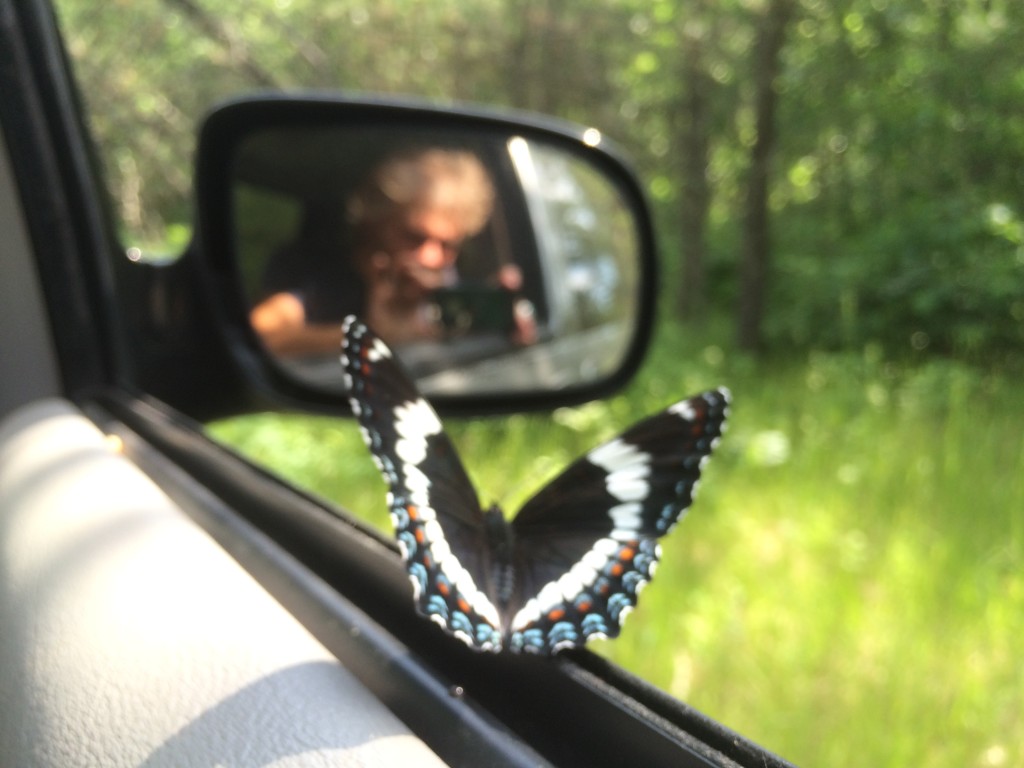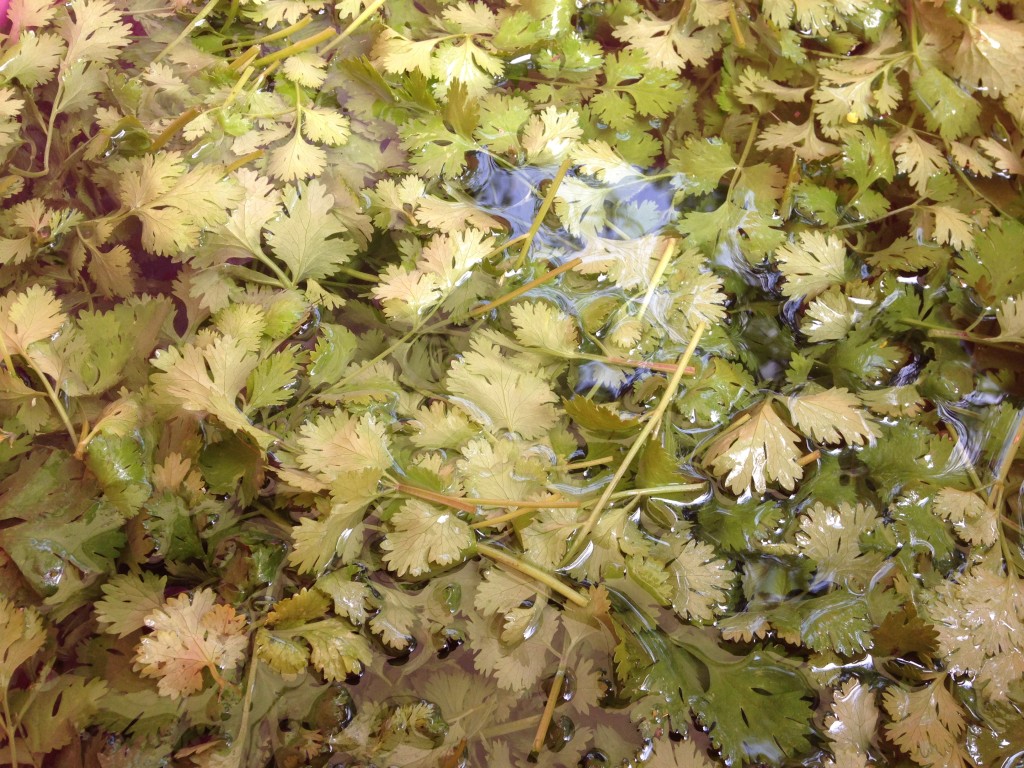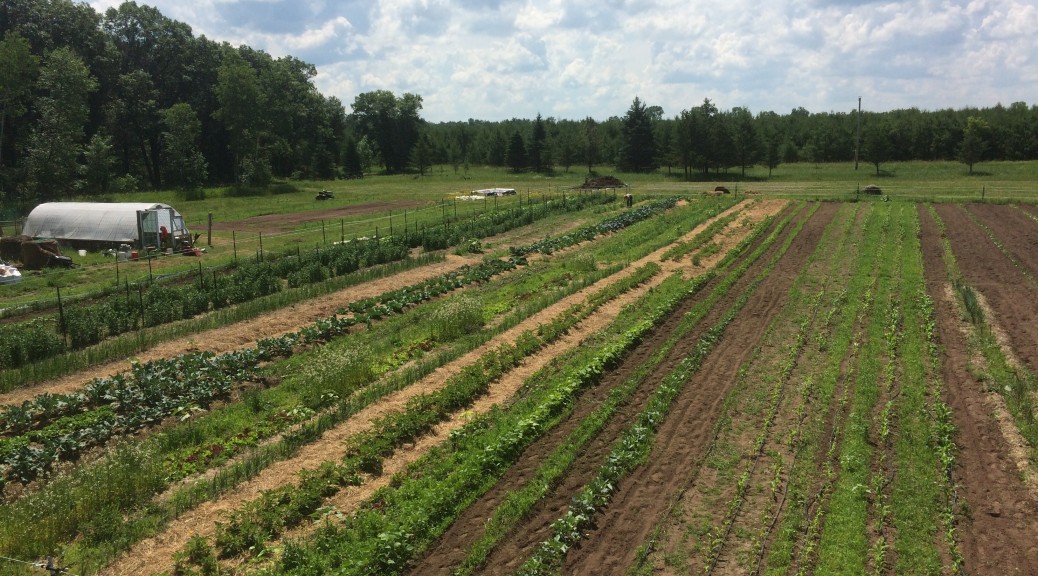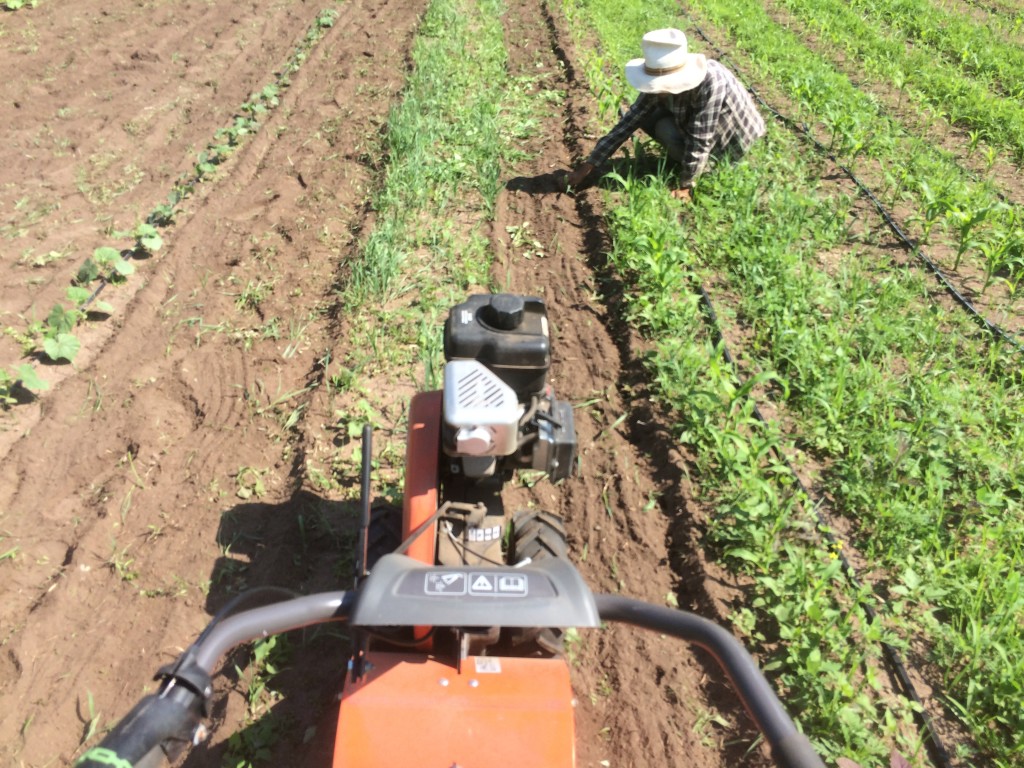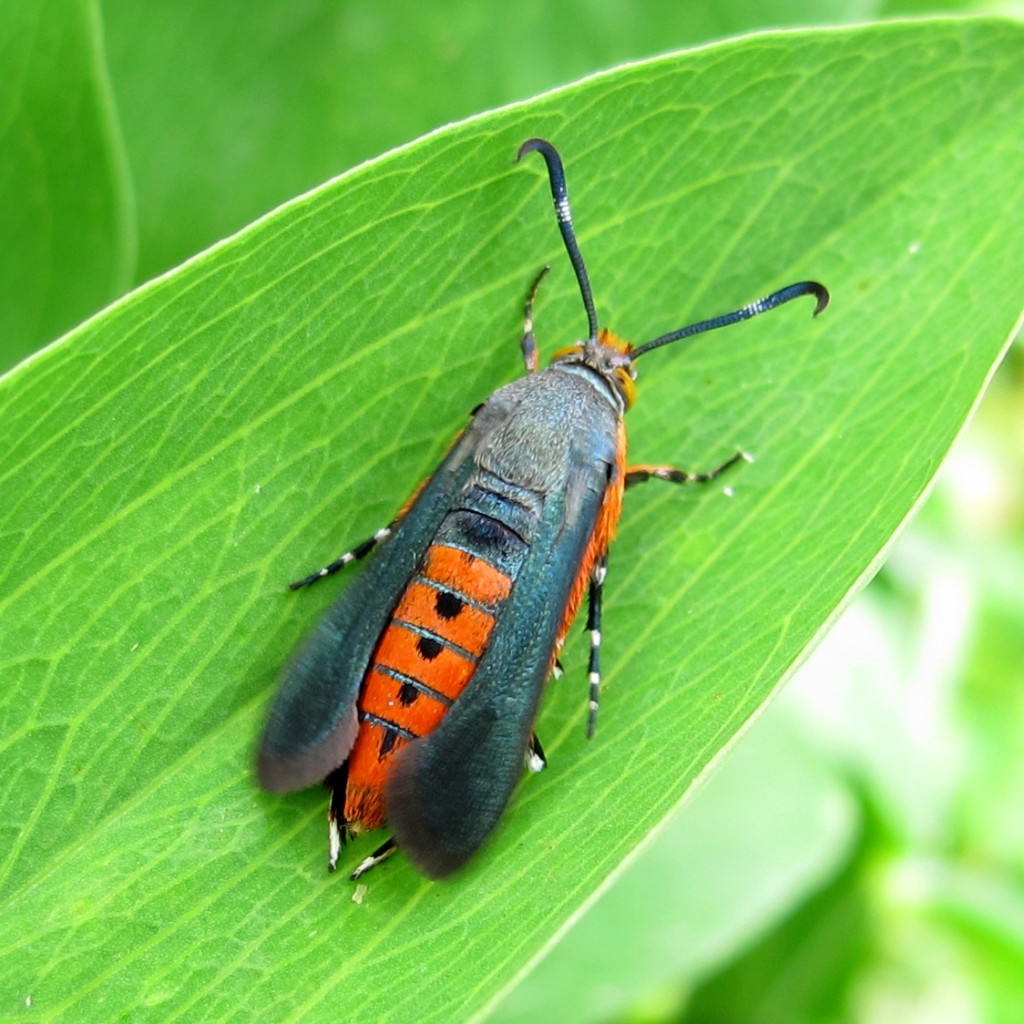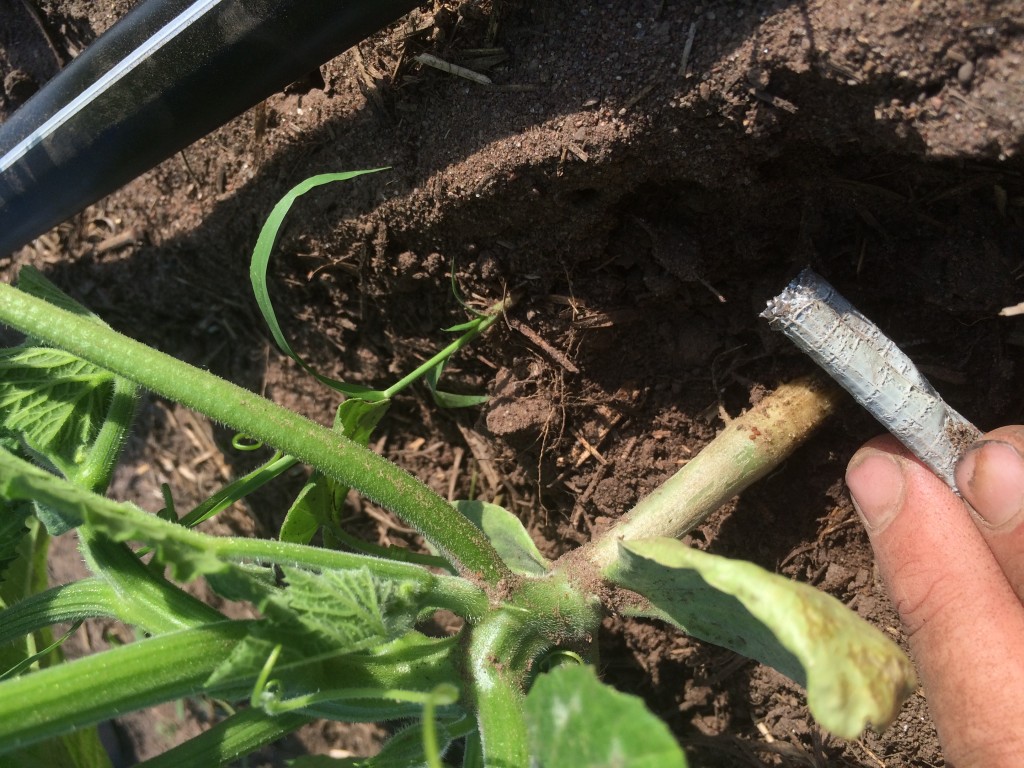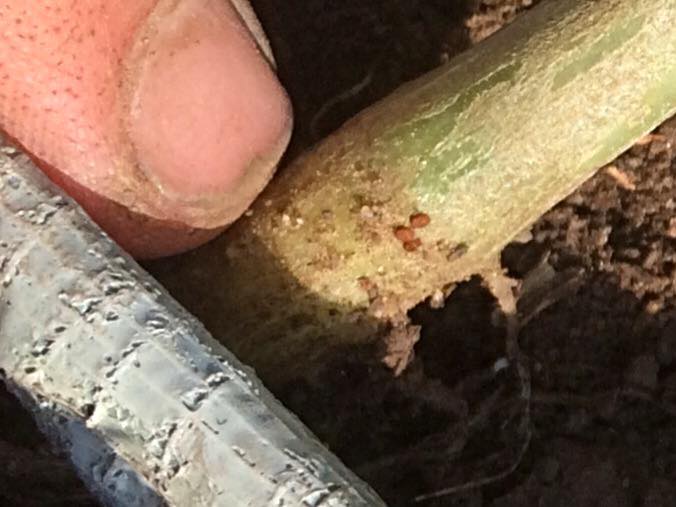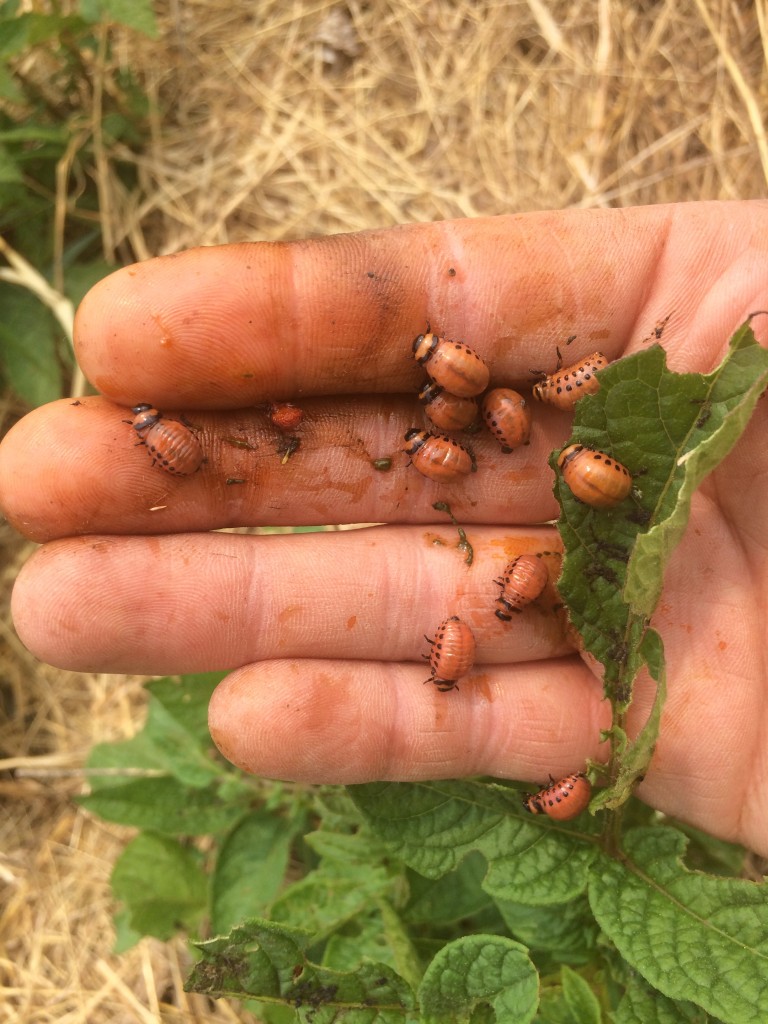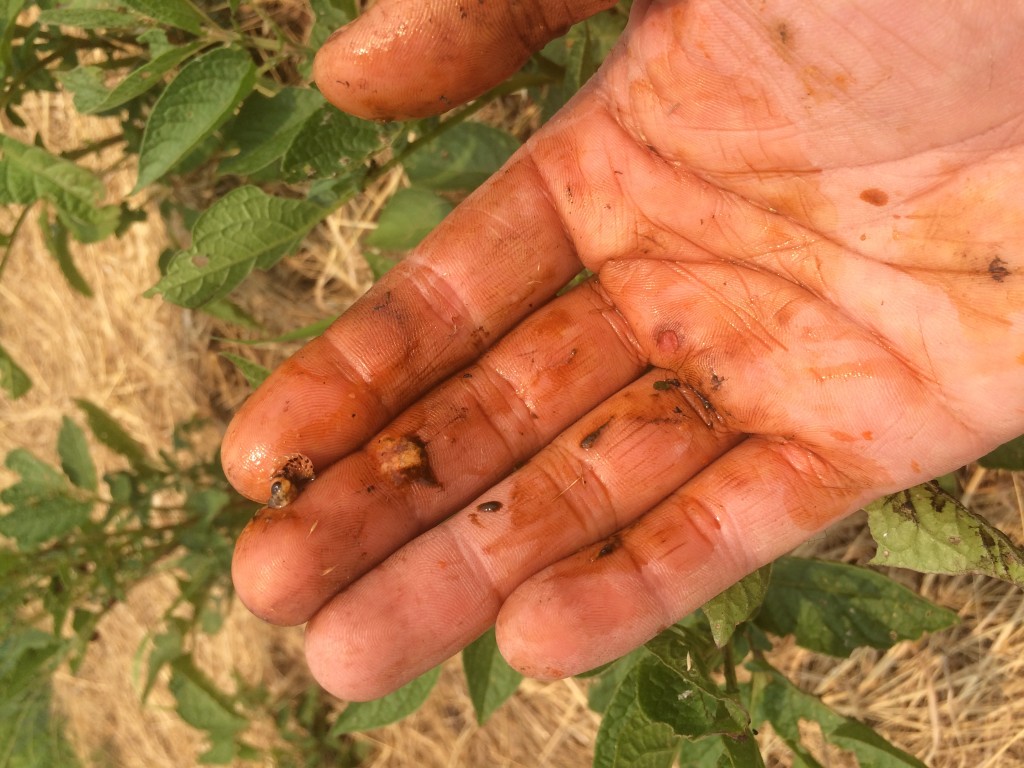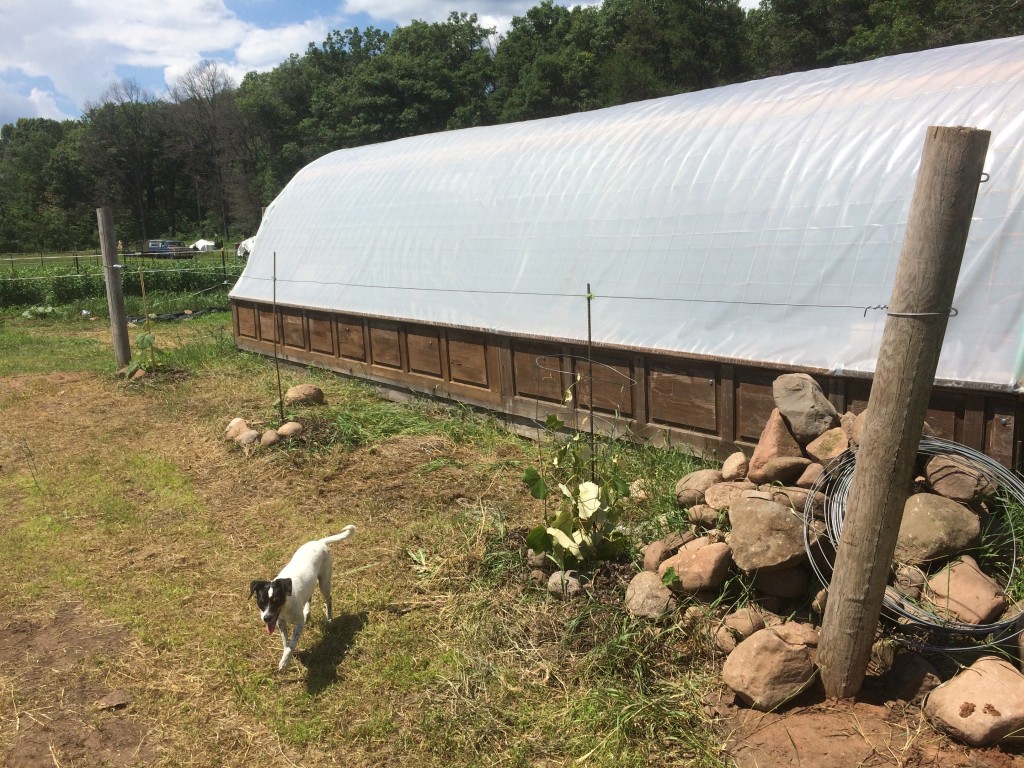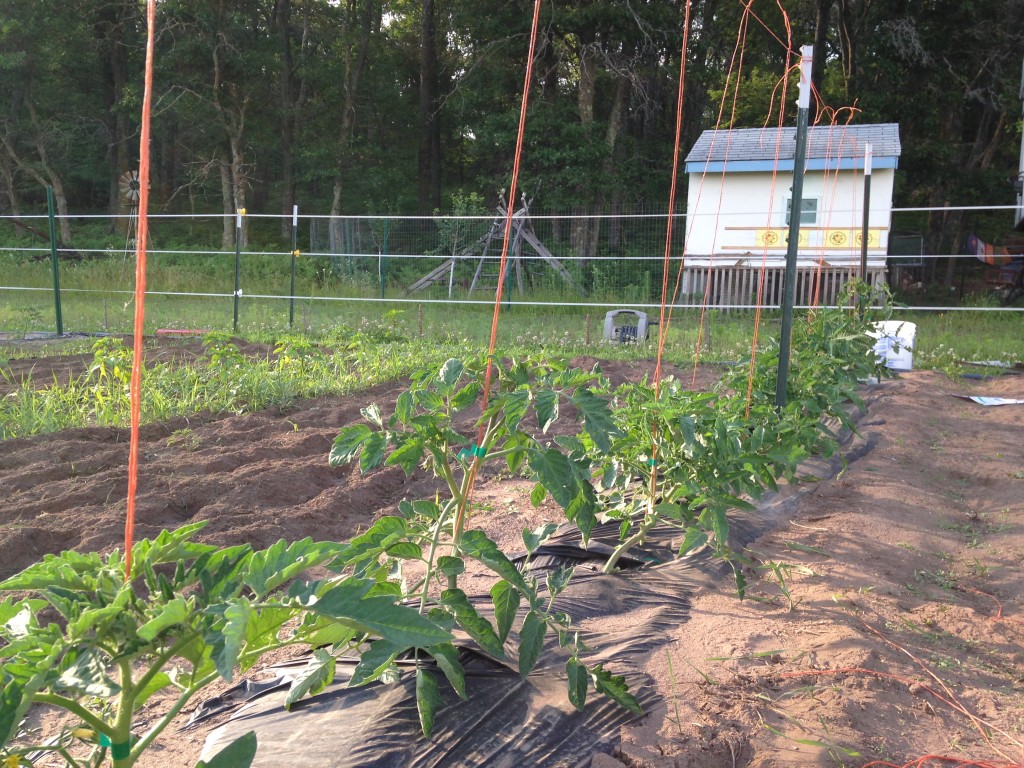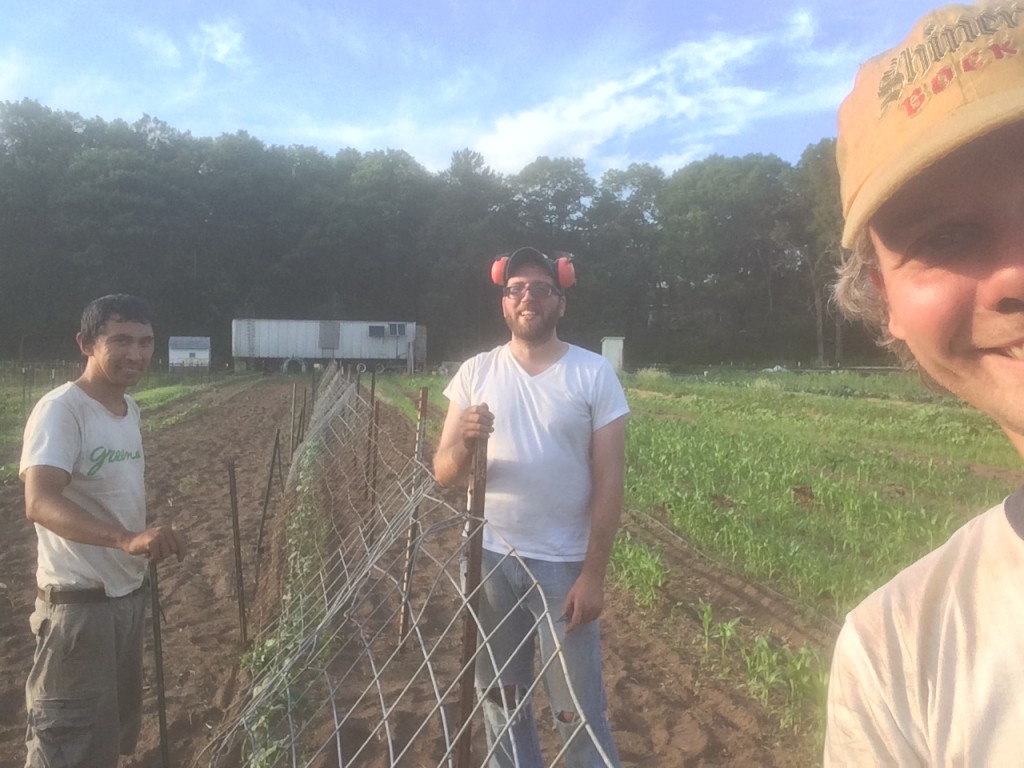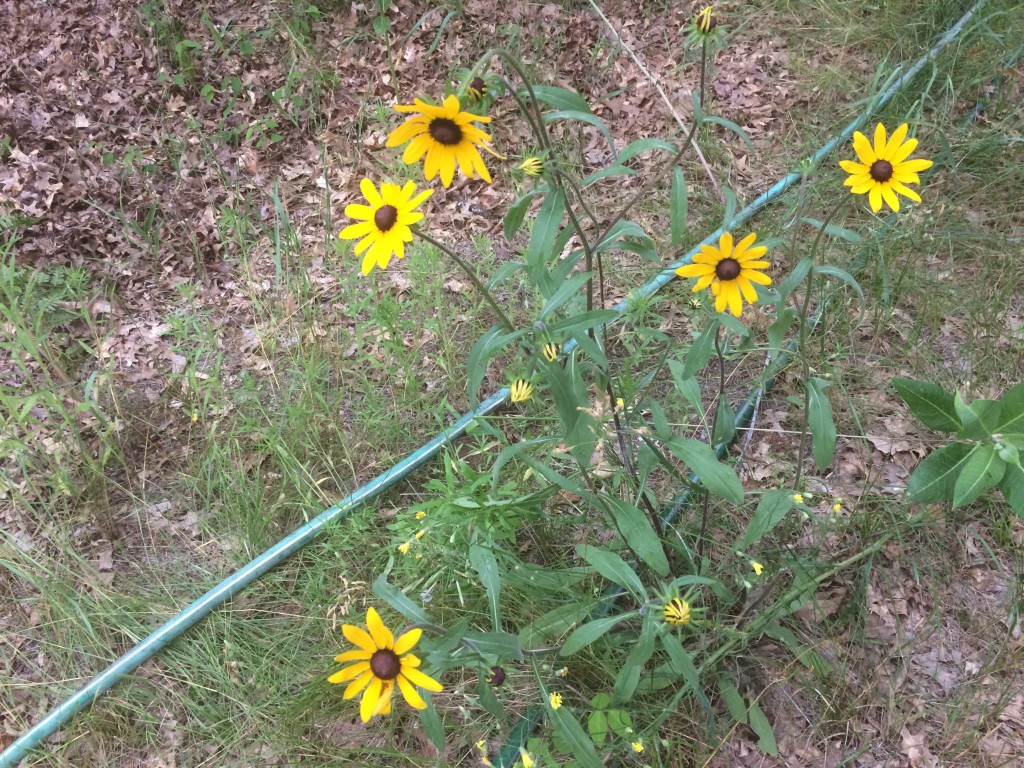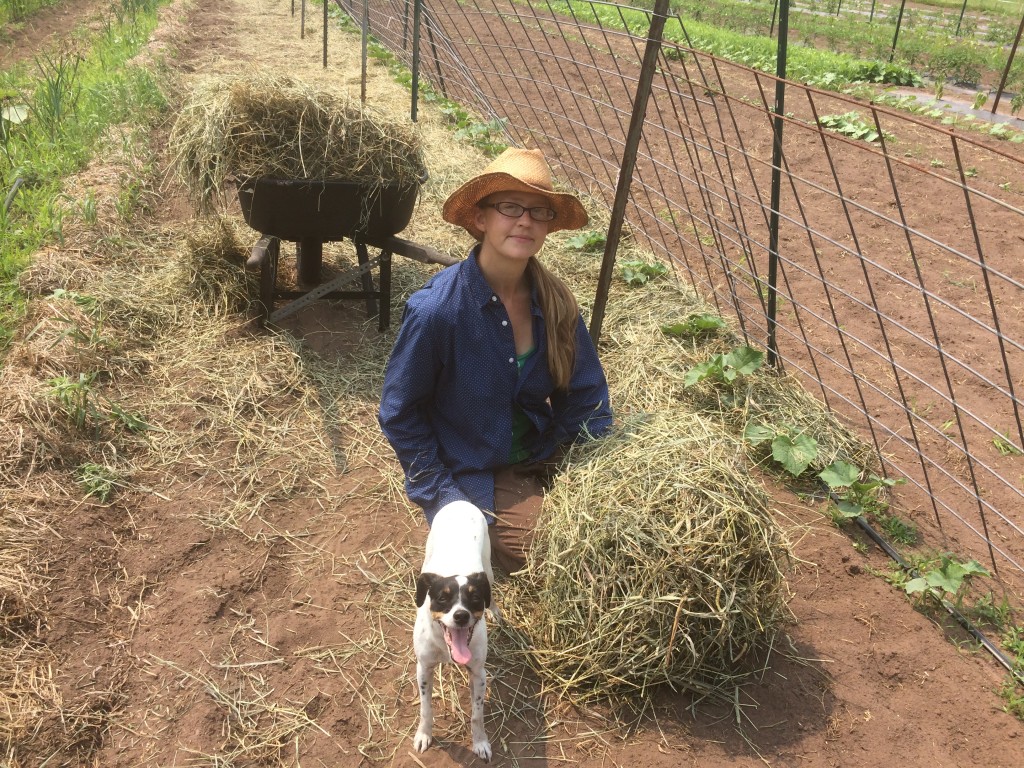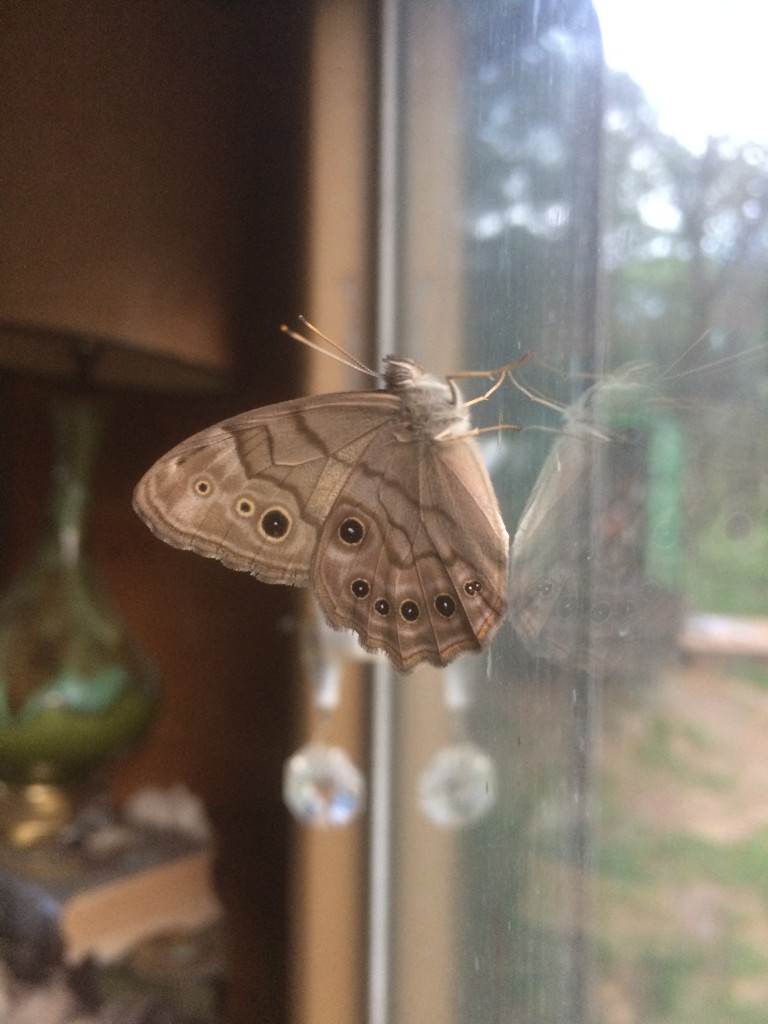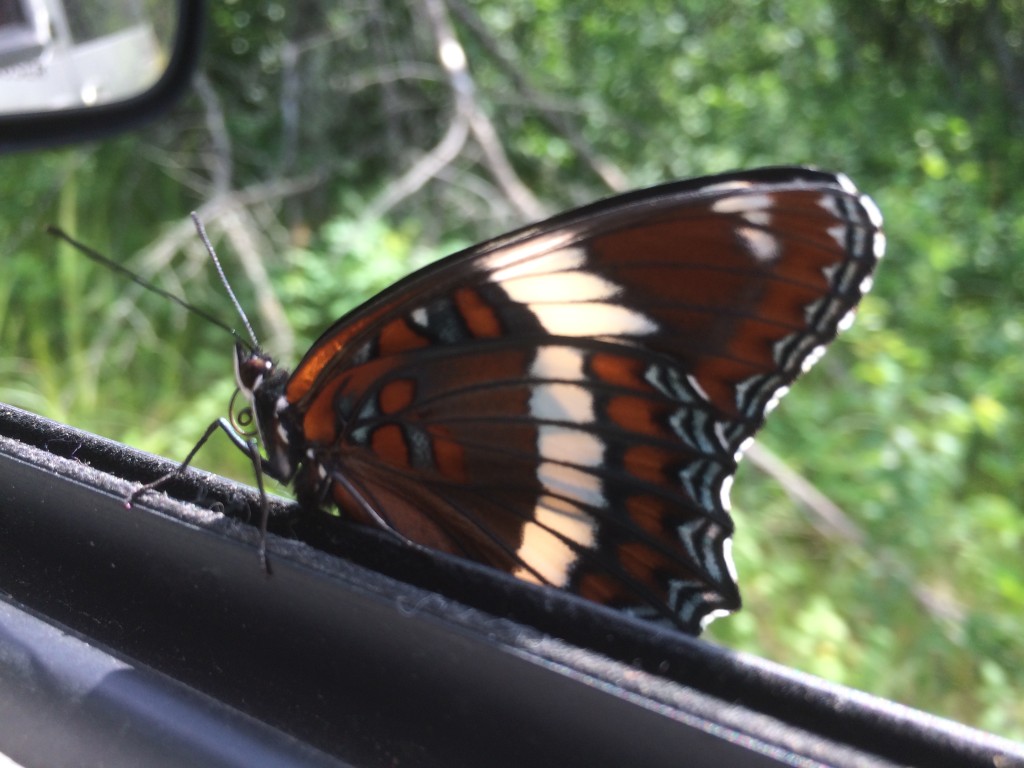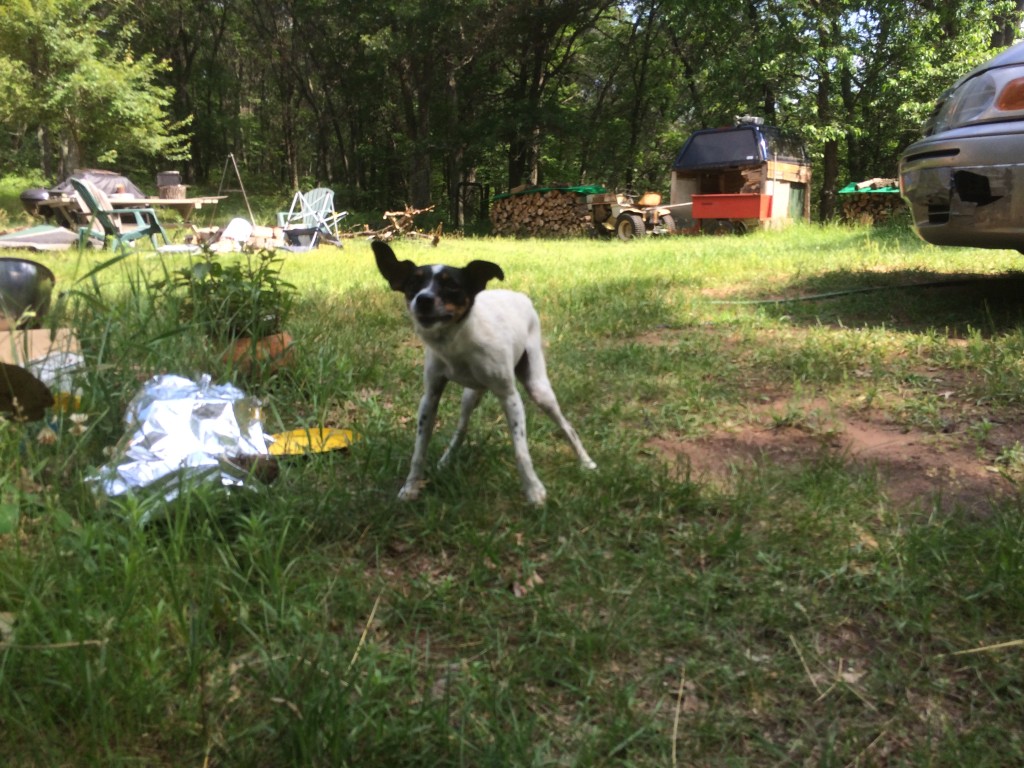The weather this week was muggy – although temperatures weren’t all that high, we got steamed by the humidity when out in the field under the open sun. It was necessary to find work in the shade (or go river swimming) during the peak farmer-baking hours of noon to two or so, but the lost time was easy to make up for since the sun has been staying up til approximately midnight lately.
Early in the week we fired up the rototiller and chewed up the thick weeds starting to overtake some of the walkways between rows, and hand weeded several rows of crops that had weeds threatening to shade out our veggies. We picked up a free screen porch off Craigslist, which will someday soon give us some nice bug-free, shady, outdoor hangout space.
While weeding, I noticed a wasp-like form darting about in the squash plants, and realized it might mean trouble so I followed it … as it buzzed from squash plant to squash plant, before selling onto one and quickly moving down to the base of the stem. A squash vine borer! Probably my least favorite insect, although this is the first year I’d caught the flying adults in their foul acts …
SVBs are not actually wasps, but day-flying moths, which specialize in breaking the hearts of gardeners and farmers. They lay tiny eggs on the plants , one at a time – up to 200 eggs per bug, scattered throughout the garden. Eggs are usually on the base of plants, just below the soil line, but can be anywhere. When they hatch, the tiny grub burrows into the host plant’s stem, and starts to feed on its innards. And it grows, and eats, and grows, and poops the plant’s heart out onto the ground. This doesn’t kill quickly – it takes time, as the grub gets bigger and bigger and does more and more damage. The plant struggles on, stunted a bit but apparently OK at first … until just before the bounty of beautiful young squash finally start to ripen – and then the entire plant collapses and dies, its fruits inedible.
I hate Squash Vine Borers more than even Cut Worms. Last year, we never saw the adults – we laid traps that were supposed to alert us to their presence (yellow pails of water they are said to drown in), but never caught a one. So we didn’t know they were in the garden until we started seeing their piles of poop at the base of the squash plants – forcing us to carefully slice open the stems of infested plants and use bits of curved wire to hook the culprits out. Then we reburied the wound in compost so the squash might reroot and recover.
It was a huge pain the ass, and stressful. So this year, we decided to try getting a step ahead of them … it was still a pain in the ass, but it beat surgery.
WWOOFer Reynaldo and I spend a couple of afternoons roasting ourselves, prostrate on the sunbaked sandy soil, carefully clearing the top inch of soil away from every single squash plant – 600 of them (since we have been waiting to thin them out til we see which are faring best) – and checking for SVB eggs.
They are tiny – a bit larger than this period. They can be found anywhere on the plant. We used little pieces of duct tape to remove them wherever we found them – mostly on the winter squashes, a lot of the summer squash, and some on the pumpkins and spaghetti squash. The only vines they avoided were the butternut squash.
It was a hassle, it seemed absurd, but it was immensely satisfying to removed dozens and dozens of the little murderers from the field before they could even be born. I took sick satisfaction in imagining the little grubs emerging and finding themselves stuck to a piece of dirty tape in the garbage, instead of on our tender plants.
It was also a week of intensive potato beetle larvae squishing – their populations spiked, and had to be hand-squished by the hundreds. This is why organic vegetables cost more than pesticide sprayed conventional crops …
Although we also weeded and mulched, the hard labor this week was mainly trellising. First, the three grape vines our friend Paula donated to us last year – I buried two 8″ thick cedar posts a few feet in the ground, 20 some feet apart, angled outward, and then stretched heavy high tensile wire between them, strong enough to one day hold the weight of the mature woody vines.
I used similar wire between t-posts through the ~500 feet of tomato vines, and Kristin gently and individually tied up each of the few hundred tomato plants to it.
And then the 200 feet of cucumber vines were set up with angled cattle panels, which we will train up onto as they grow.
(Thanks to Neighbors Dave and Marcie, who lent us the 40 steel t-posts we were short, having forgotten we would need more of them after doubling the number of trellised plants since last year!)
(Oh! And since we’re on the trellis theme, should mention that I added a gnarly oak branch to the hop trellis on the side of the semi trailer, since one of the vines had scaled past the top of its 16′ trellis.)
The quack grass, treacherous bastard that it is, broke the truce we had, and started busting up through the thick walkway mulch everywhere, so that war is back on. Grrrr.
The bear from the last couple weeks has been seen around the area repeatedly, but hasn’tcome back around too closely – I think my stern talking to was taken to heart. Or maybe they’re just afraid of our guard hens. We avoided the punishing hail that was widespread in the region, destroying entire fields of crops mere miles from us. It’s been too hot for the lettuce – apparently we’ll have to plant it when the ground is still frozen or something if we want it to form heads next year. The beans are flowering and look happy – we should start harvesting them in a few weeks now. We’ll be going to the farmer’s market in Saint Croix Falls for the first time this year on the 4th of July (we haven’t gone yet as a result of the cutworm-devastation of our early crops).
Today’s harvest weather was perfect – after a nice heavy rain last night got everything happily hydrated, it was a cool and foggy morning, without any direct sunshine on the delicate salad green. Once we had all the sensitive stuff into the shade, the sun came out, but the storm had cleared away the humidity, leaving perfect cozy summer weather for cleaning, drying, mixing, portioning, bagging, and boxing up your shares.
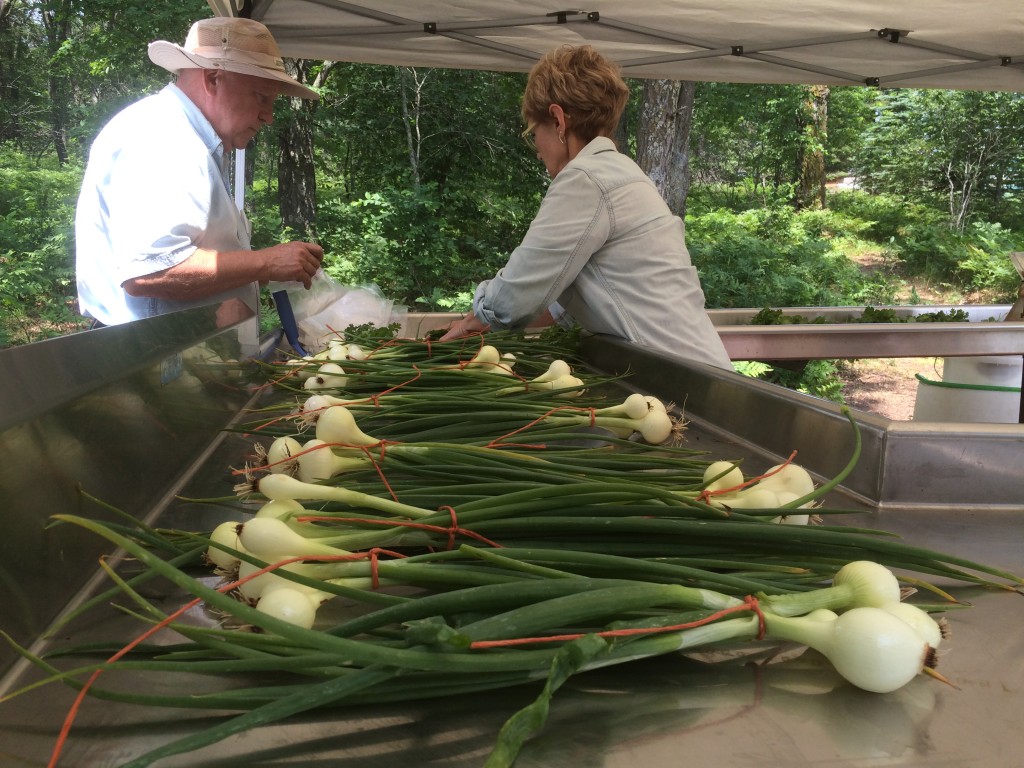
Week 4 Box:
- Week Four Salad Mix: Ruby Red, Buttercrunch Bib, and Frizzy Fuckin’ Green Lettuces (might not be remembering the names quite right), Arugula, Baby Kale, Tat Soi, Spinach, and a bit of Mizuna, Pea Tendrils, and Lambs Quarter.
– - Cilantro – great garnish for tacos, stir-fries (stirs-fry?) -Mexican and Asian foods. Fresh, not cooked! We have a hard time growing it up here, but we love it so we always try and get a little bit here and there.
–
- Sugar Snap Peas – Great fresh snacking, but also great in a dish, lightly sauteed, so they maintain their crunch – and their color brightens up. Before cooking, pop off the tops and pull the “string” from the pod – like this: https://www.youtube.com/watch?v=Q0I5xbyDeMU. Kristin tosses them with onions, soy sauce, and garlic, then adds a little fresh herbs at the end.
–
- Broccoli – Lately we’ve been enjoying ours cooked, tossed in a spicy ginger garlic sauce. Reynaldo sauteed some up with rice and it was tasty …
– - Pea Tendrils (aka Pea Tips) – Add to your salad mix, put into a sandwich, or stuff them in your face fistful at a time and pretend you’re one of the predators that would love to sneak past our electric fence and gorge. People also make pea pesto that these would work out well in, although we haven’t tried that ourse;ves yet.
–
- Spring Onions – not quite full-grown onions, but plumper than green onions … edible from top to bottom. Eat the green parts first, as the white bottoms keep longer.
–
- Radishes & Salad Turnips – slice them up and add to your salad mix!
– - Radish & Turnip Greens – If you already made delicious pesto and a Southern-style recipe from the previous weeks’ suggestions, then perhaps this week it’s time to try a furikake recipe for these under-appreciated but deliciously-nutritious greens!
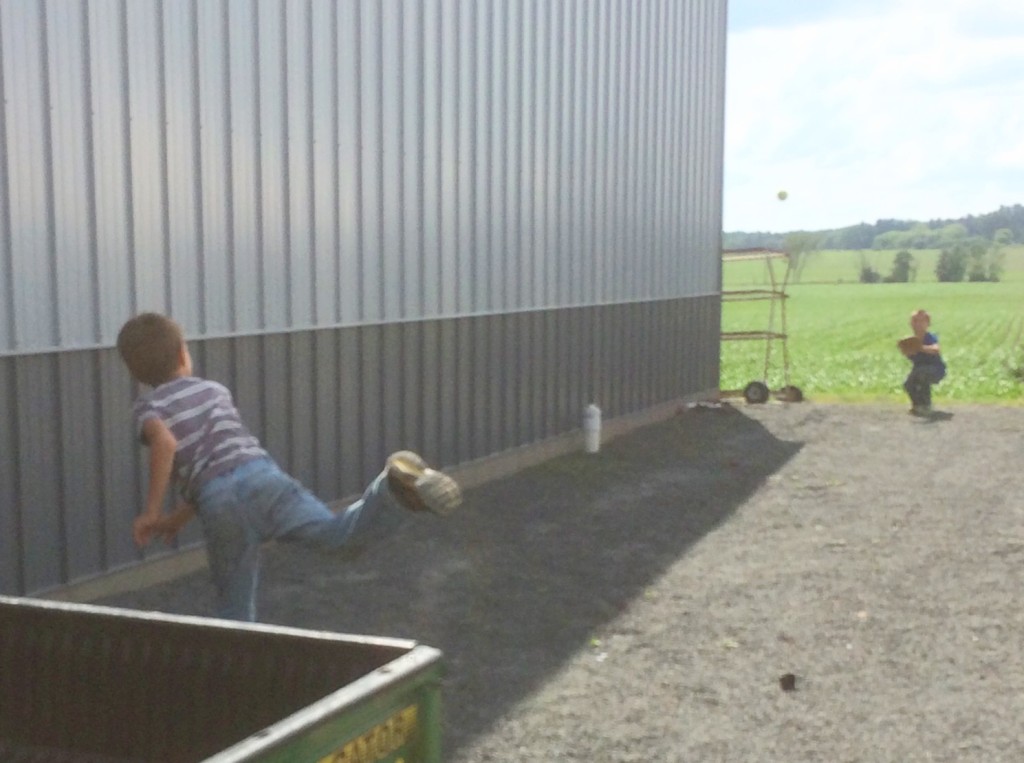
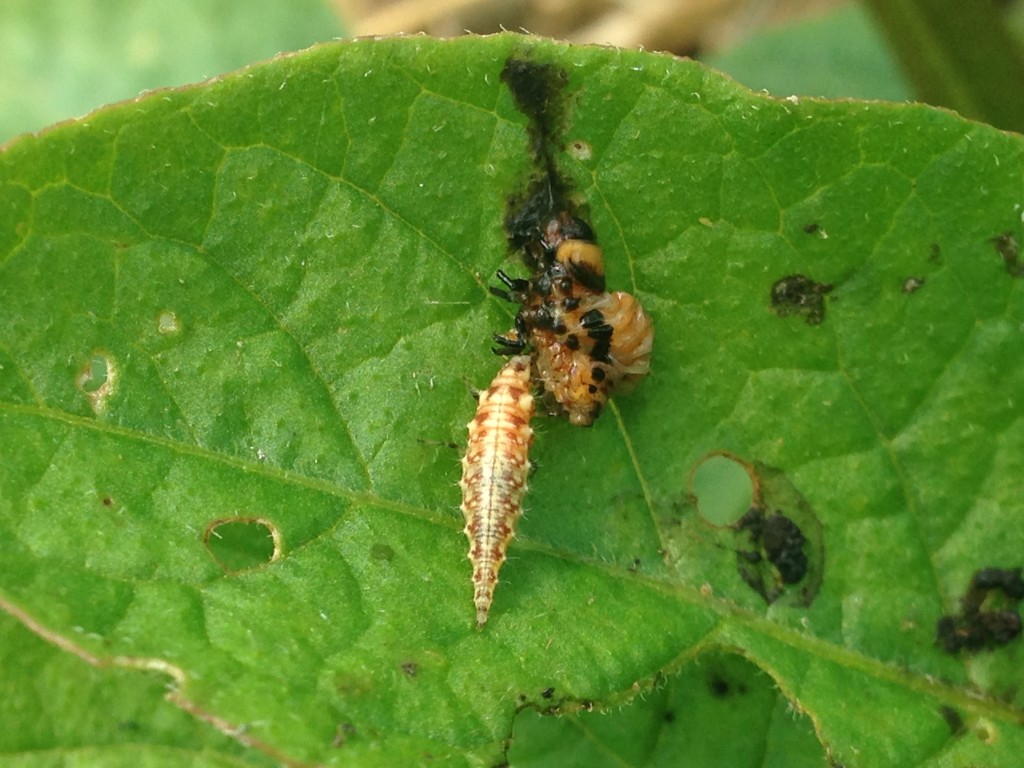
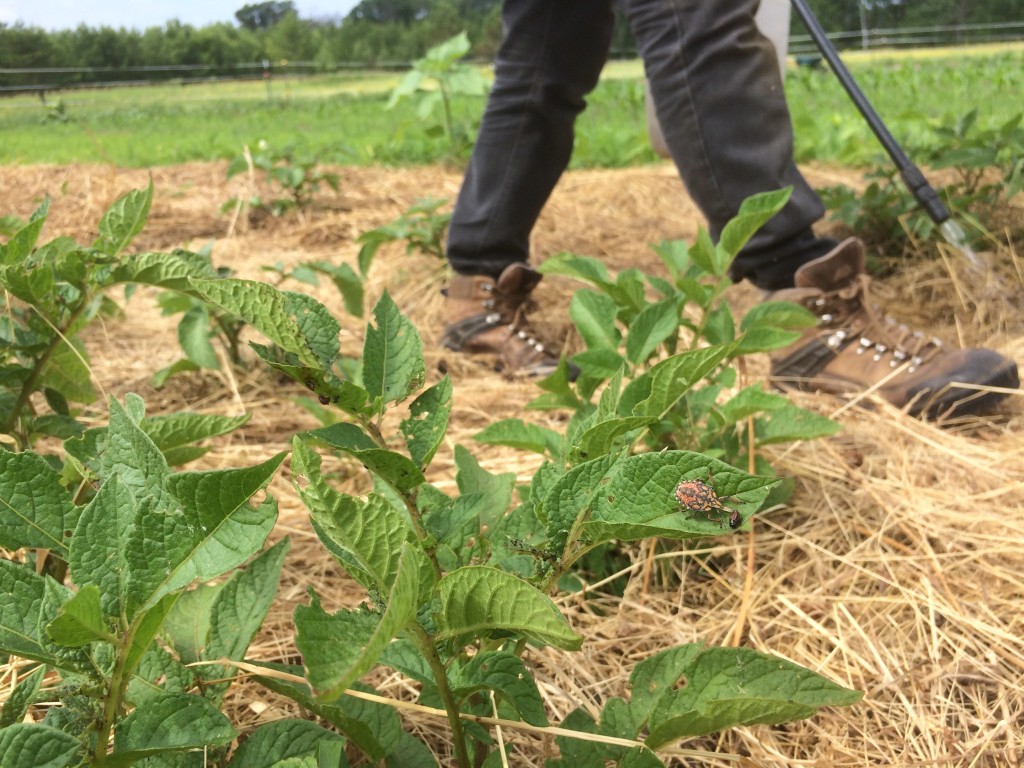
a predatory shield beetle devours a potato beetle larvae in the foreground, while Kristin sprays juiced potato beetles on the leaves to repel adults
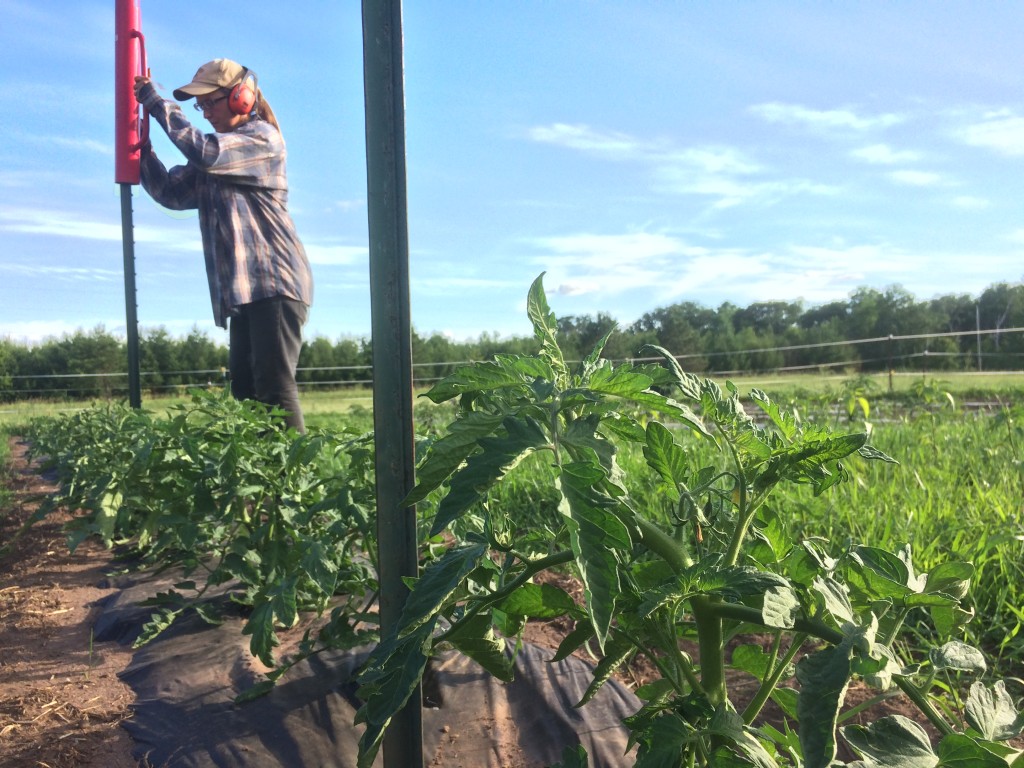
Kristin pounding posts, tomato plants being happy
